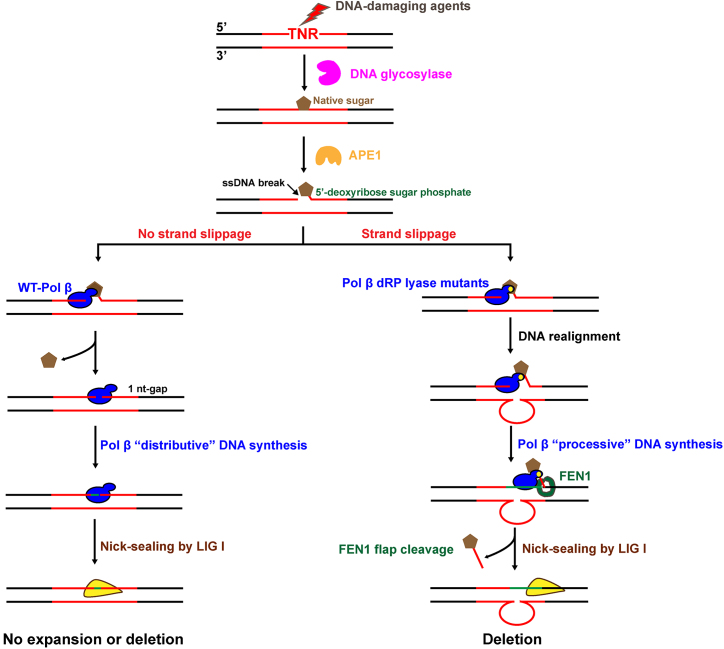Figure 8.
The dRP lyase of pol β prevents TNR deletion by suppressing a processive DNA synthesis and repeat strand slippage during BER. A DNA base lesion that occurs in the TNR tract is removed by a damage-specific DNA glycosylase. This results in an abasic site that is subsequently 5′-incised by APE1, leaving a 1 nt gap with a 5′-dRP moiety. If the dRP lyase activity of pol β is proficient, the Lys72 of pol β forms the Schiff base with the 5′-dRP group preventing DNA strand slippage. The dRP lyase then removes the dRP group leaving a 1 nt gap. Pol β then fills in the gap generating nick and dissociates from the product, and the nick is sealed by LIG I. This allows pol β to adopt a distributive DNA synthesis mode, thereby preventing repeat deletion (sub-pathway 1). On the other hand, deficiency of pol β dRP lyase caused by dRP lyase mutations locks the dRP lyase domain to the dRP residue. This ‘tethers’ pol β to its template allowing it to adopt a processive DNA synthesis mode. This results in DNA slippage and promotes the formation of loop structures on the template and pol β skip-over of the loop structures leading to repeat deletions (sub-pathway 2).

